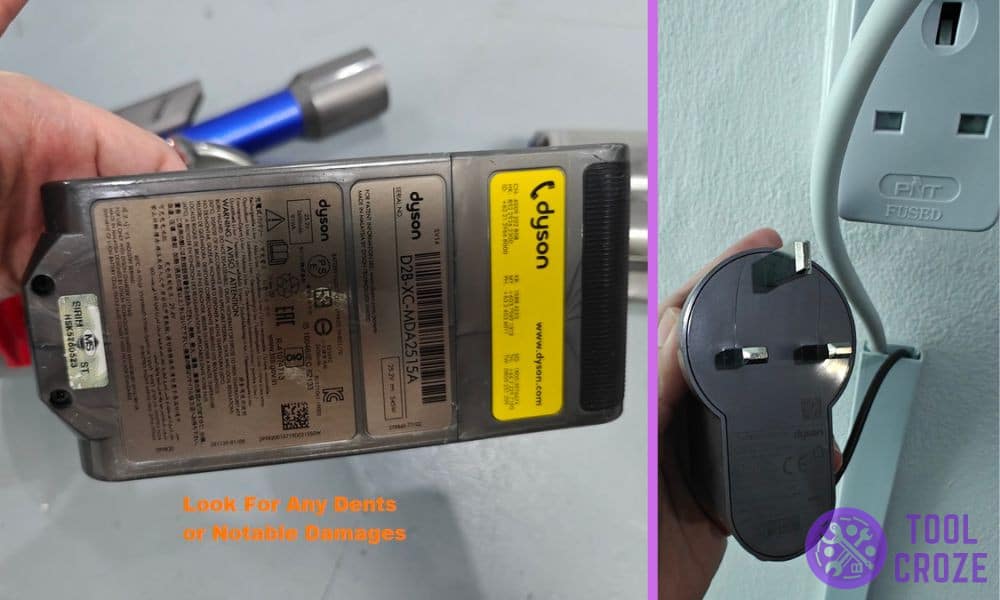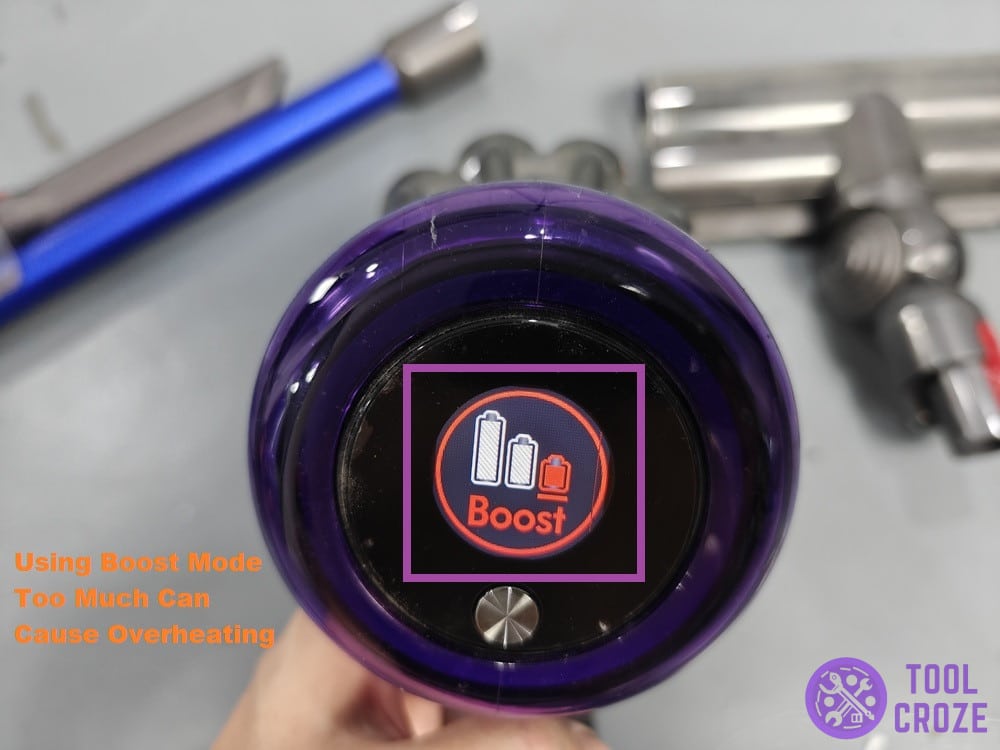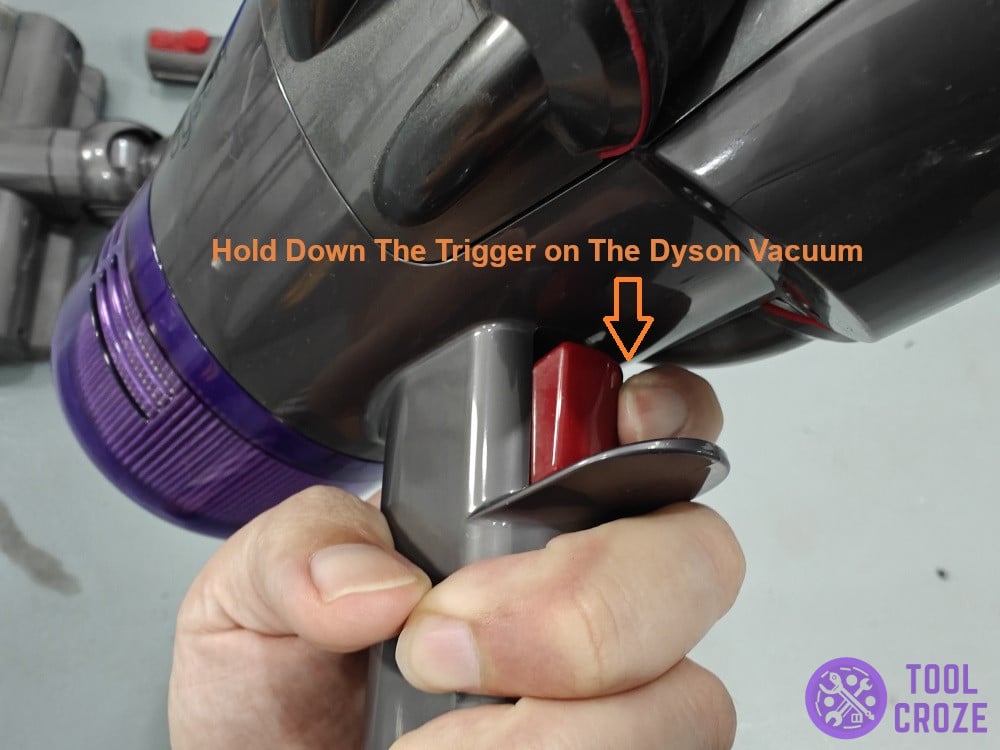
Wireless vacuums are great for tight spaces hard to reach with a cord. But, they’re only great when they actually work. So, what should you do when your Dyson vacuum is fully charged but still not working?
Something like this might sound like an issue with the battery, but that’s not necessarily always the case. Let me walk you through the lines of what you need to do when this happens.
Why Is Your Dyson Vacuum Fully Charged But Still Not Working?
- Overheating Components
I’m sure you’re familiar with how some devices can overheat, right? It happens when there’s too much strain put on the device. Overheating also occurs when you’re using a device in high temperatures.
Another way overheating might happen is when you leave a device on charge for too long. Overcharging is another term for this specific case.
Well, if any of these things happen with your Dyson vacuum, it will overheat too, and won’t work. This is done as a fail-safe to prevent the device from completely burning out due to overheating.
Speaking of burning out, one thing I want to bring attention to is max mode or Boost mode.
This setting on Dyson vacuums makes them run at exceptional strength, but that comes with pretty hefty power consumption.
As I mentioned in the picture above, using max/Boost mode too often can result in overheating. That’s because it uses so much power and puts a heavy strain on the battery and motor alike.
So, if you did any of the things I mentioned earlier, or use max mode too much, that’s probably why your Dyson vacuum isn’t working. It needs to cool down, and I recommend letting it do so at least for a day.
- Water Damage In Motor
Absorbing too much water with a Dyson vacuum will eventually lead to the filter getting wet. This filter is usually right next to the motor, which can immediately short-circuit when it comes into contact with water.
So, I think a short circuit in your motor might have occurred if you recently cleaned up any water.
If you suspect this, immediately take off the motor’s cover and use something to suck up water and debris from it like I’m doing in this photo:
If you’re lucky, cleaning the motor should help get it functioning again. But, that’s not always the case. Motor damage caused by water in Dyson vacuums usually has to end up being repaired.
In most cases, you’re going to have to get a technician to look at the machine. If the damage is especially bad, I think your only option is to buy a new motor entirely.
Moisture trapped inside the vacuum or wet filter can really cause damage to your Dyson vacuum. This can cause your Dyson vacuum not to work even when you press the trigger.
I have made a video about this topic and you can watch it below.
In my video, the blue light is blinking and the vacuum won’t work even when I press the trigger. There could be two reasons why this happens.
First is a battery issue. Make sure you correctly charge the battery. If your battery is not charging or not holding charging, you would need to replace it.
The second reason if about the moisture trapped or wet filter. Always make sure you dry the filter before installing it back to the Dyson vacuum.
- Try To Force-Start
There’s some protective circuitry inside the battery of Dyson vacuums that’s meant to protect the device from harm. Sometimes, these circuits go off when they don’t need to.
When this happens, the battery stops sending power to the device. So, even though it’s fully charged, the device isn’t turning on because the battery thinks it isn’t safe to do so.
But, there is one way to get around this problem, which involves forcing the vacuum to start again. Using the charger will be necessary for this.
To start, have your charger unplugged like mine in the image right above this. Set the adapter aside and use the charger on your vacuum like you normally would, but without plugging it into power.
With the charger and device connected, hold down the trigger on the Dyson vacuum. While you’re holding this, plug the charger into a power outlet. Now keep holding onto the trigger for at least 20 seconds.
Now take the vacuum out of the charger and then release the trigger. The process should be completed if you do all these steps right!
When you press the trigger again, that should have flipped the protective circuitry inside the battery and turned your vacuum back on.
- Dead Battery
At the start of this guide, I mentioned how a fully charged Dyson vacuum that’s not working doesn’t necessarily always mean that your battery is dead.
But, if everything else you did so far has failed, a dead battery is looking likely.
I think that your Dyson vacuum’s battery pack is probably dead if all my solutions so far didn’t work. It’s especially likely for anyone who has a battery that is a few years old by now.
Batteries start to get weaker and weaker with age until they just don’t work anymore. Dyson vacuum batteries are no different. When this happens, getting a new battery is the only option.
They can also get damaged after years of use. Coming into contact with different surfaces can make them develop dents and other faults that lead to a loss of performance.
In case the battery is just old or too damaged, contact Dyson for a suitable replacement battery depending on the vacuum model you own. A new battery should get everything back to shape.







